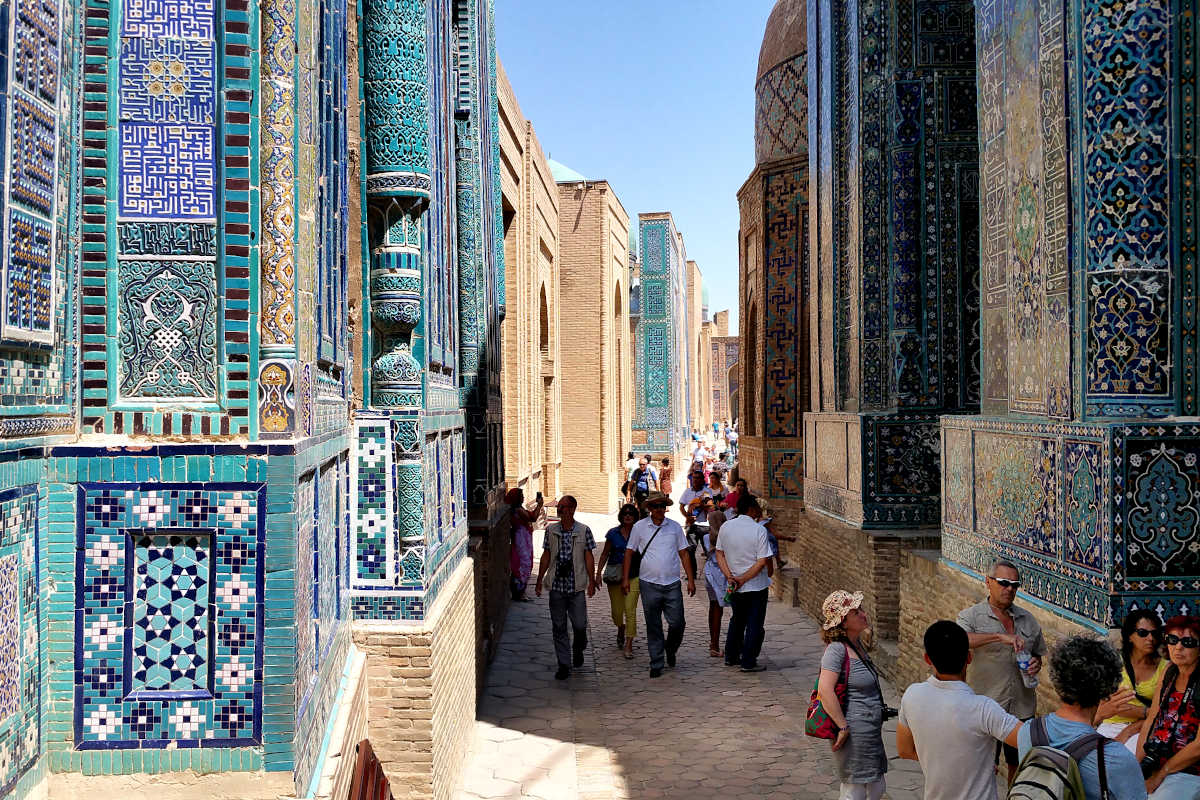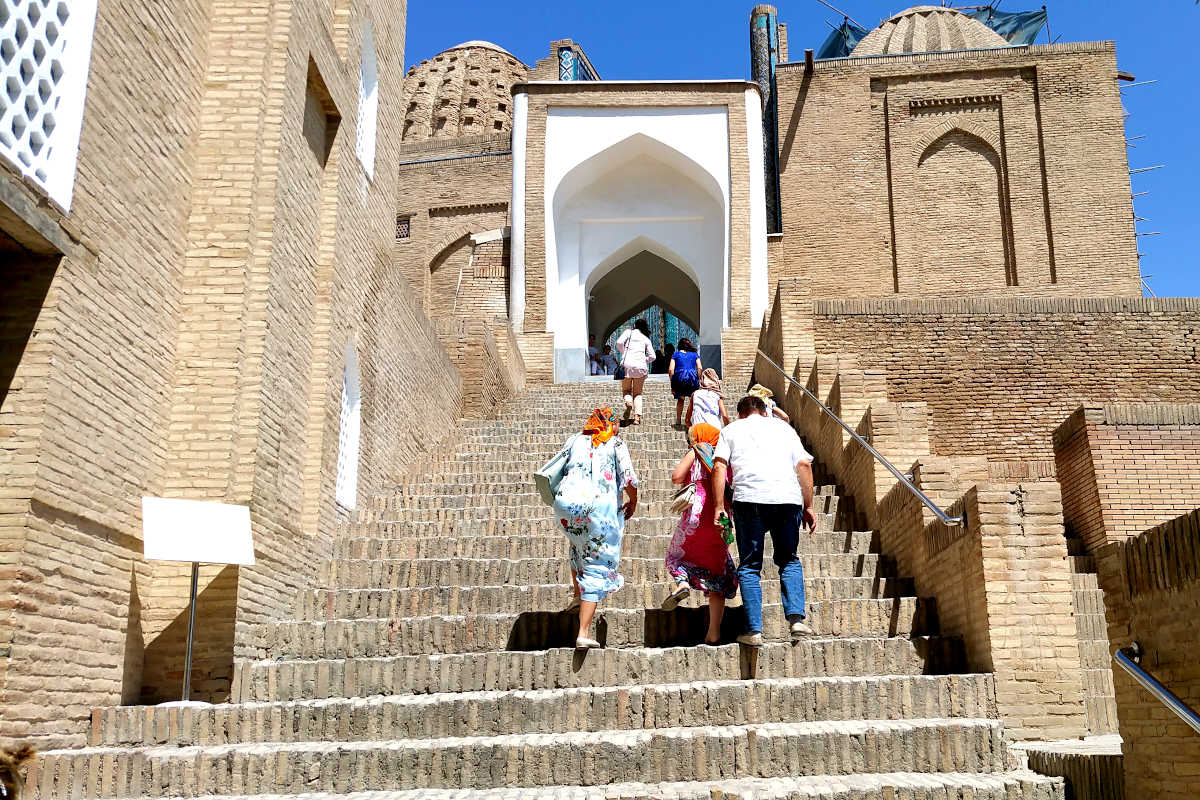Samarkand - the Shahi Zinda Ensemble
The Shahi Zinda Ensemble in Samarkand – a complete city that can compete in beauty with such world famous tombs as the Egyptian pyramids, the Taj Mahal in India. It is a pilgrimage place of the world, where people are attracted by a special spirit, a magical power.

“The venerable and humble women and sisters of Amir Temur wanted to be buried on the threshold of this place, protected by the angels, – writes Abu Tahir Khoja, – and built such buildings here that the azure sky averted the eye of time – they did not see such beautiful and elegant buildings, so the turquoise dome of the sky opened their eyes – the moon and the sun – he did not admire such colour tiles.
A series of elegant, shining blue tomb vaults stretched along the ancient slopes of Afrasiab. Shahi-Zinda – one of the sanctuaries of the Muslim Orient – is a monumental complex of tombs, which was built in the X – XI centuries and today comprises forty-four tombs in more than twenty mausoleums.
The most important sanctuary on the top of the hill is the Mazar, attributed to Kusam, son of Abbas, cousin of the Prophet Muhammad, according to legends and sagas. The ritual of worshipping his tomb was introduced in the past.

There is a legend about him as the Shahi-Zinda, the “living king”. This appearance has been known in Central Asia for a long time and is associated with the image of Siyavush, the “suffering deity”. The roots of this story go back to an ancient cult of suffering and dying deities.
This image has been most popular among women since ancient times. Obviously it is thanks to the worship of “disappeared saints” that this famous necropolis became the women’s burial place for Amir Temur.

According to archaeological excavations, the area of the necropolis was a residential area of the ancient city until the XI century. The foundations and crypts of the first buildings of the ensemble date back to the XII century. century. In the XIII century, after the conquest by the Mongols, the inhabitants left the old fortress and Shahi-Zinda was in desolation for a long time.
At the beginning of the XIV century colourful buildings of mausoleums appeared one after another on the site of the dead city. At the time of Temur’s death, the buildings in Shah-i-Zinda were only within the walls of old Samarkand. Behind the back of the fortress wall, there was a large moat and a precipice.

In the course of time the detached walls were razed to the ground and the buildings of the lower group were erected at the foot of Afrasiab during the rule of Ulugbek. At first a detached mausoleum with two domes and a portal to the south appeared.
For the ascent to Afrasiab a wide staircase was built. The buildings of the lower group were completed between 1434 and 1435. The inscription on the entrance portal informs: “This majestic structure was founded in 838 AD (1434-1435 AD) by Abdulaziz-khan, son of Ulugbek Guragan, son of Shahrukh, son of Amir Temur Guragan.

Mazarishah is very popular among the population. Eyewitnesses reported that the dervishes of the cadmium order passed by here every Thursday of the 1920s. The Jahriya ritual, developed by the great Sufi Ahmad Yassavi (loud Radia), began in the upper mosque, then the participants, without stopping to say “ho” or “huh”, walked down the numerous steps of the stairs to the lower mosque in circular movements.
Before the end of the ceremony, the participants sang religious verses (hoviz). It was believed that the performance of Ziarat on the Mazars of St. Kusam had an amazing influence on the aesthetic mood of the “people of the heart” (mystics).
In 2005, Shahi Zinda Ensemble in Samarkand underwent extensive restoration, during which the fence of the mausoleum streets, which rose on the right side of the path, was removed to open the space where the mosque, early medieval (11th century) madrassas and traces of earlier mausoleums were found.
